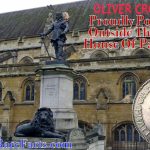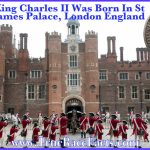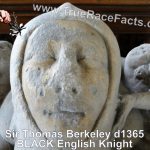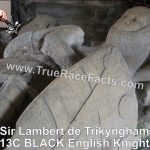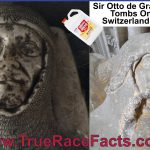Richard II, (born January 6, 1367, Bordeaux [France]—died February 1400, Pontefract, Yorkshire [now in West Yorkshire], England), king of England from 1377 to 1399. An ambitious ruler with a lofty conception of the royal office, he was deposed by his cousin Henry Bolingbroke (Henry IV) because of his arbitrary and factional rule.
Early years
Richard was the younger and only surviving son of Edward, the Black Prince, and his wife, Joan of Kent. Because his father died prematurely in 1376, Richard succeeded his grandfather Edward III as king in June 1377.
The king’s early years were overshadowed by the Hundred Years’ War, a prolonged struggle with France. The heavy cost of the war led to the introduction in 1377 of a novel, and highly regressive, tax, the poll tax. In November 1380 Parliament granted permission to impose the tax for the third time at a flat rate much higher than before. The tactless attempts the government made in the following year to enforce collection of the tax led to the outbreak of the Peasants’ Revolt. Richard’s role in ending the revolt was rightly acclaimed, but it should not be supposed that he was influential in making policy. Almost certainly, the confrontation with the rebels at Smithfield was engineered by a hard-line group of his counselors.
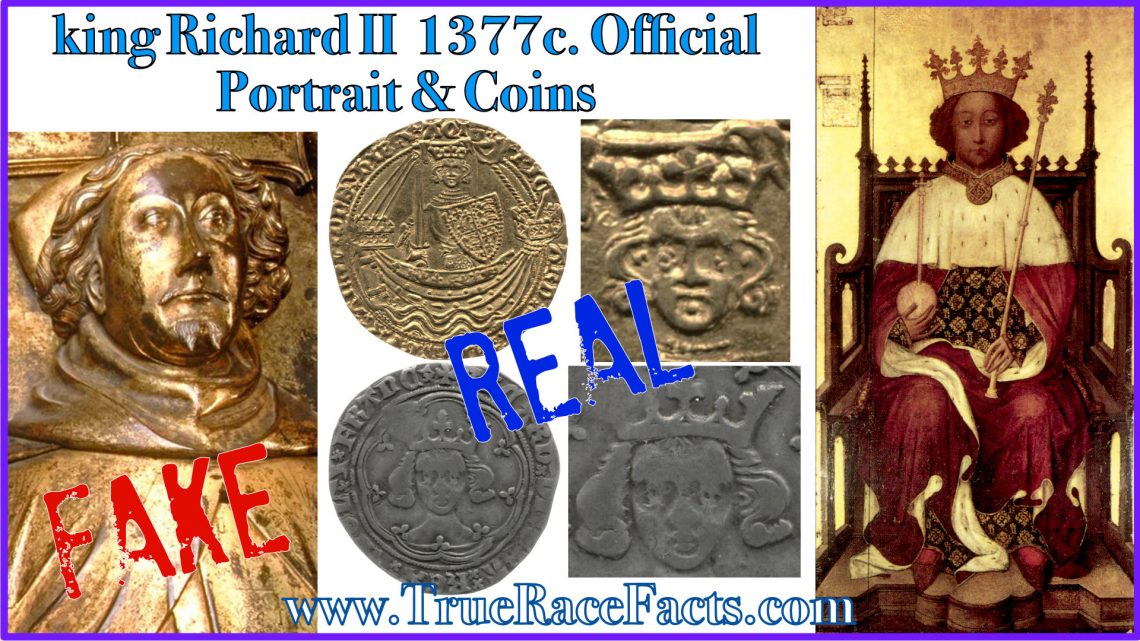
In the years after the revolt, Richard’s interest in the affairs of state intermittently increased. According to the chronicler Thomas Walsingham, a contemporary of Richard’s, the choice of Anne of Bohemia, the daughter of the Holy Roman emperor Charles IV, as his bride in 1381 was very much Richard’s own. By 1383 his personal initiative showed in the choice of his friends and counselors, including two figures of particular importance—Sir Simon Burley, his former tutor, and Burley’s ally, Sir Michael de la Pole, chancellor from 1383. Richard was also on close terms with some ambitious younger men, notably Robert de Vere, earl of Oxford, and the knights Ralph Stafford and James Berners. These younger men were deeply jealous of the power and prestige of John of Gaunt, the duke of Lancaster. Their repeated criticism of the duke and their involvement in an attempt on his life led to an atmosphere of rancour and suspicion at court. By 1385 Richard’s relations with the higher nobility were quickly deteriorating.
In October 1386 there was a major crisis in Parliament. In the wake of Lancaster’s departure for Spain in July with a large fleet to pursue his claim to the Castilian throne, the French planned an invasion of England. De la Pole, hastily organizing the coastal defences, sought an unprecedentedly large grant of taxation from Parliament. The massive scale of his demand provoked resistance, and the House of Commons clamoured for his resignation. Richard, stung by the Commons’ effrontery, retorted that he would not remove one scullion from his kitchen at their behest. Eventually, however, he had to give way. De la Pole was replaced as chancellor and put on trial, and a commission of government was appointed to hold office for a year.
Richard reacted to the Commons’ assault by retreating to the Midlands to rally his supporters. At Shrewsbury and Nottingham in August he received vigorous reaffirmation of his rights from the royal courts. News of the judges’ opinions frightened the king’s critics, who reacted by bringing an accusatio, or formal appeal, against his allies of treason. The Lords Appellant, as they were now called—the duke of Gloucester and the earls of Warwick, Arundel, Nottingham, and Derby—mobilized their retinues in self-defense. Richard dispatched his friend Robert de Vere southward with an armed force, but de Vere was defeated at Radcot Bridge on December 20, 1387. A few days later London was occupied by the Appellants. Richard returned to his capital humiliated.
In the aptly named “Merciless Parliament” that followed, the Appellants purged the court. Two of Richard’s main allies were executed, and others were dismissed from office. By the following spring, however, the Appellant tide had subsided. At a council meeting at Westminster on May 3, 1389, Richard formally resumed responsibility for government. He dismissed the Appellants’ ministers and appointed new officers of his own. At the same time, he published a manifesto promising better governance and an easing of the burden of taxation.
Richard’s mature kingship
In a five-year period beginning in 1389, Richard went some way toward honouring his promises. Taxes fell sharply following a truce with the French in 1389, and from 1389 to 1391 no demands for a tax on “moveable” property were made. Richard also showed greater circumspection in his patronage. Previously he had concentrated favour on just a few, but he now rewarded a wider circle, though each in smaller measure.
Yet the seeming moderation of Richard’s rule was matched by a strong emphasis on the reassertion of royal authority. Richard was determined never again to suffer a humiliation of the kind inflicted upon him by the Appellants. Accordingly, in the 1390s he developed a program to strengthen the material foundations of his rule. In a novel initiative he built up a large baronial-style affinity, whose members wore the king’s badge of the white hart. At the same time, he attracted to the central offices of government a corps of hard-working ministers deeply committed to his cause, notably John Waltham, the treasurer (1391–95), and Edmund Stafford, the chancellor (1396–99). Richard also sought to enhance the dignity and mystique of his monarchy. He encouraged lofty new forms of address—for example, “your highness” or “your majesty,” instead of “my lord.” He also elaborated the ceremony and protocol of his court, making the rebuilt Westminster Hall the focus of a grand monarchical cult. He stressed the quasi-religious dimension to his kingship, and solemn crown-wearings in Westminster Abbey formed an increasingly important part of his kingly ritual.
The highly assertive nature of his kingship revealed itself in his first expedition to Ireland. In 1394–95 he led a substantial force there to buttress the position of the English administration. The native Irish were overawed by the presence of an English king, and the local chieftains, or “High Kings,” all attended the court in Dublin to submit to his authority. In letters of submission made for the penitent chieftains, Richard articulated his political vision. Rebellion and disobedience were to be rewarded with appropriate punishment, the rebel Irish were to enter into the king’s obedience, and all Irish, of whatever status, were to perform their accustomed obligations to him.
Tyranny and fall of Richard II
The exalted notions that Richard articulated in Ireland formed the background for his dramatic reassertion of royal authority two years later in England. In July 1397 Richard ordered the arrest of the senior Appellants—Gloucester, Arundel, and Warwick. The first two were imprisoned and executed, and the last exiled to the Isle of Man. In letters that he sent to foreign rulers shortly afterward, Richard justified his actions in terms of his political beliefs. He said that the lords’ earlier rebellion and disobedience called for “an avenging punishment” that would “thresh the traitors out even to the husk,” and that the destruction and ruin of their persons would bring to his subjects a “peace” that would last forever. By peace, Richard meant not only the absence of war but also “unity,” the foundation of a strong realm.
But Richard’s peace was illusory. In reality, his entourage was riddled with factions and feuds. In January 1398 a quarrel broke out between Henry Bolingbroke, Lancaster’s son, and the king’s former ally, Thomas Mowbray (duke of Norfolk and earl of Nottingham). Mowbray apparently warned Bolingbroke of a plot by some of the king’s intimates to destroy the Lancastrian inheritance. Bolingbroke reported the conversation to the king, who ordered that the conflict created by this betrayal of confidence be settled by a trial by combat. A day was set for the adversaries to meet, but at the last moment Richard, fearful of Bolingbroke’s possible victory, cancelled the engagement and gave judgment himself. Bolingbroke was sentenced to exile for 10 years, and Mowbray for life.
In February 1399 Lancaster died, and Richard took possession of his inheritance. Three months later, his coffers replenished with Lancastrian gold, Richard set off again for Ireland; the settlement of 1395 was in danger of unraveling, and his personal attention was required. While he was away, his cousin Bolingbroke returned from exile. Landing in Yorkshire, the duke met the earl of Northumberland and quickly won his support. Then he began a triumphant march across central and western England. Richard was slow to return from Ireland. By the time he reached Wales in mid-July, popular support for him had melted away, and in the meantime York, “the keeper of the realm,” had ceased resistance. Around August 15 Richard surrendered to Northumberland at Conway. Northumberland took him under guard to Bolingbroke at Flint; from there he was taken to Chester and later to London.
In September Bolingbroke summoned a Parliament in his adversary’s name, and a committee was appointed to draft articles of deposition. On September 29, after a series of meetings in the Tower of London, Richard was induced to lay aside his crown. On the following day the king’s statement of abdication was read in Parliament and approved. The assembly also assented to the articles of deposition, because abdication alone, as an act that could be rescinded, was insufficient. When the proceedings were concluded, Richard was taken from the Tower to Leeds and later to Pontefract. In January 1400 a group of his former courtiers, led by the earl of Salisbury, plotted to restore him to the throne. Their rebellion was crushed, but it convinced Bolingbroke, by now Henry IV, that he could no longer allow Richard to live. Sometime in February the former king was put to death; by what means is not known. After a requiem mass at St. Paul’s Cathedral, the body was obscurely interred at King’s Langley, England. Early in Henry V’s reign Richard was given honourable burial in the *tomb that he had made for himself in Westminster Abbey.
*Most tombs in England, Ireland, Scotland and Wales, including artefacts, got defaced, aka iconoclast, during the Cromwellian Wars in the 17th century. Westminster Abbey is the most revered Abbey in the world. When I visited, I saw many damaged monuments, so the tomb would not have survived unless they were hidden, which is highly unlikely because doing that would be punishable by death, the crime of treason. Hence, none of the ancient tombs in Westminster Abbey is in the original likeness of the Kings, Queens and nobility. During the restoration, sculptures were denied contracts if they wanted to create the monuments in the authentic likeness of Byzantine, which means the dark image.
“There will come a day, when all the lies will collapse under their own weight, and truth will again triumph.”
Joseph Goebbels – Hitlers Right Hand Man
Article Citation: Saul, Nigel. “Richard II”. Encyclopedia Britannica, Accessed 17 August 2022.. Coins British Museum
Disclaimer: True Race Facts have made the long overdue honest determination that the King was dark brown, aka BLACK of the Hebrew, Shemitic negro race. Based on his facial phenotype, lips and thick braided hairstyle. Authentic original coins are the most accurate determination to identify the King because he would have approved the coins before they were hammered and issued. There are many ancient FAKE coins on the market, so beware when looking at coins. The deceivers made it their mission to cover up the dark ages, so even history should now be considered pseudo-history.





